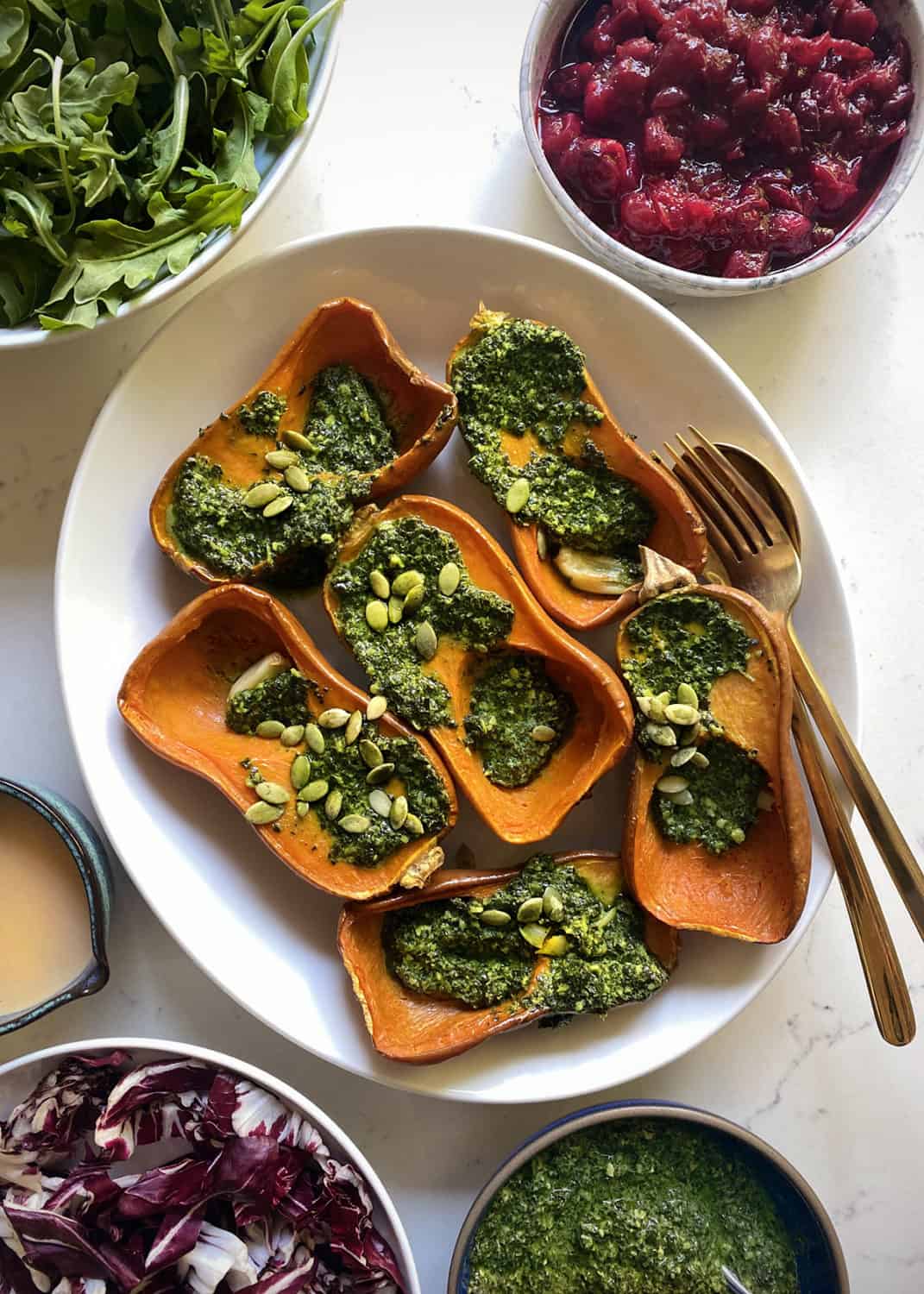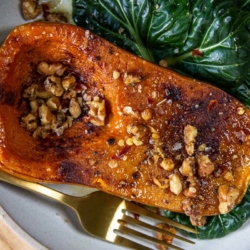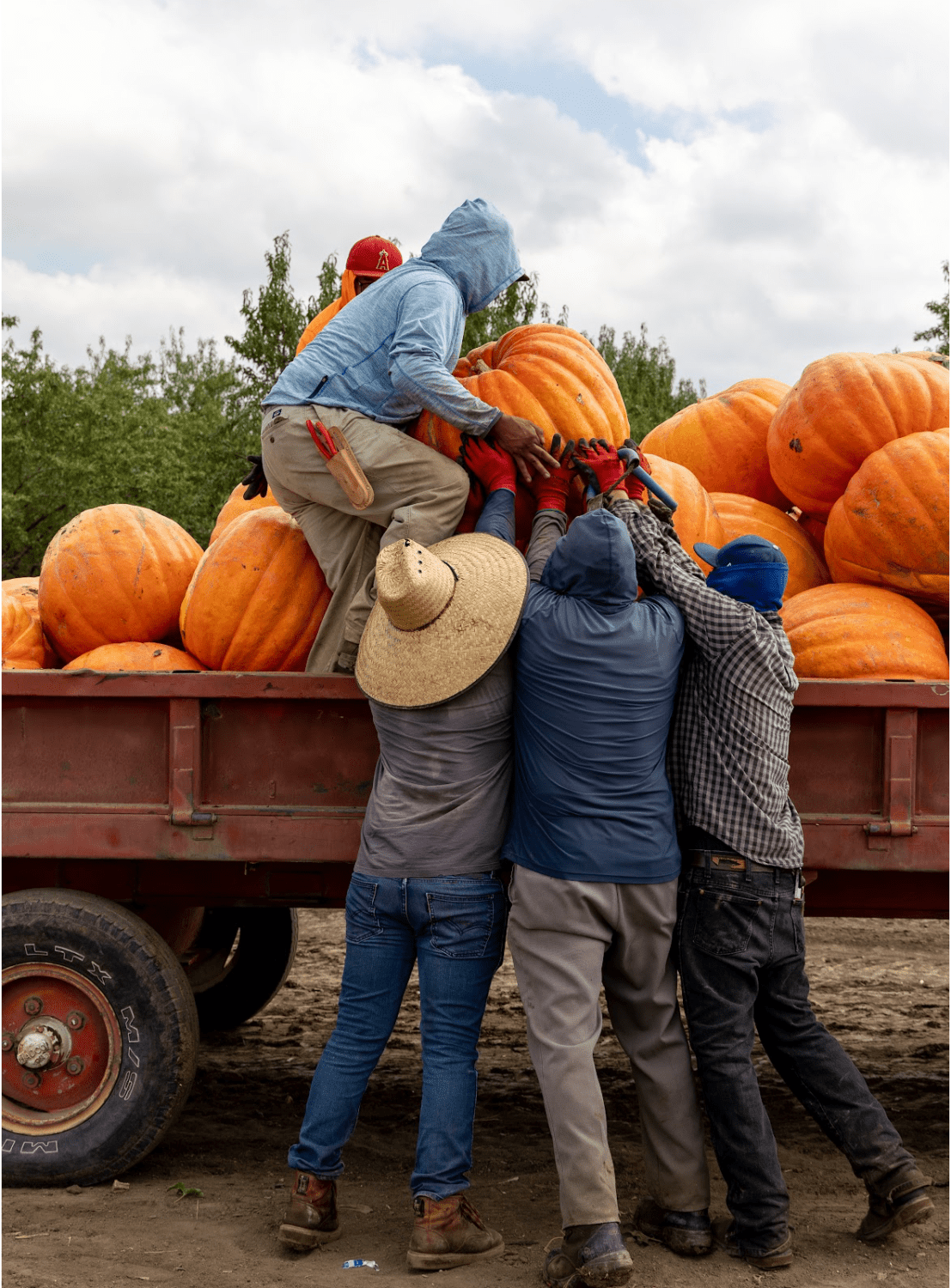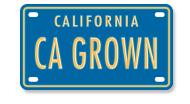
CA GROWN Blog
Discover. Learn. Connect.
Everything You Need to Know About Honeynut Squash & How to Eat It
Meet Them Here
Read Bios »Everything You Need to Know About Honeynut Squash & How to Eat It
Honeynut squash is all the rage this holiday season and for good reason – they taste great, are easy to cook, and they are absolutely adorable to look at!
First things first, do you know what a Honeynut squash is when you see it at the grocery store? Yes, this type of winter squash looks a lot like a Butternut squash, but it is actually very different.

What’s the difference between a Butternut & Honeynut squash?
Honeynut squash is a cultivar of winter squash bred from butternut and buttercup squash.
It has a similar shape and flavor to butternut squash, though it is only about half the size, and is significantly sweeter. Honeynut squash might grow to be 6 inches versus 8-12 inches for a Butternut squash.
Honeynut squash has a dark tan to orange skin that is very thin and edible with orange fleshy pulp that is significantly sweeter than Butternut.
Can you eat the skin on a Honeynut squash?
Cooking Honeynut squash is done like any other winter squash, but with other benefits its smaller size means it need only to be halved before cooking. Additionally, the skin is tender and thin so you don’t need to peel it. It’s totally edible.

How to shop for Honeynut squash.
For the sweetest flavor, look for Honeynut squash from California that have very little or no green skin. The squash’s skin should be smooth, with no wrinkles.
To know if your winter squash is from California, simply look at the sticker. Looking at the image above, you can see that these particular Honeynut Squash grow in Corona, California.

You can find Honeynut squash at your local Farmer’s Market too!
California Grown Creator, Sarah of The Delicious Life, has a deep love for this type of winter squash.
After finding these little beauties at a local farmer’s market she wrote an incredible article stuffed with Honeynut squash facts and just about a bazillion ways to serve them.
Click here to learn more about this type of winter squash on Sarah’s website.
How to store Honeynut squash.
This type of squash has a thinner skin than butternut, meaning they don’t last as long. Keep them in a dark place at room temperature and cook the squash within one or two weeks of buying it.







How to break down a Honeynut squash.
While it isn’t rocket science, breaking down a winter squash, can be intimidating, and honestly, dangerous if you aren’t using a really sharp knife. Dull knives are a serious hazard in the kitchen, especially when it comes to cutting oddly shaped ingredients.
What equipment is needed to break down winter squash?
- A level cutting board with a bit of elbow room.
- A large, very sharp kitchen knife.
- A kitchen towel or paper towels
- A large spoon with a sharp edge.
For safety’s sake when working with wobbly ingredients, it is easier to create a super flat edge yourself by slicing off a little bit of the fruit or vegetable at the bottom.
When you place the cut section against the cutting board the piece of produce stays put instead of wobbling around. Now you can get the leverage you need to safely cut through the actual piece of produce itself.
The best way to prepare a Honeynut squash.
We think that one of the easiest and most delicious ways to prepare this squash is to roast it in the oven then top it with a bit of crumbled rosemary and spiced toasted walnuts. It’s a little salty, a tad bit sweet, and savory all at the same time. YUM!
Now that you know how to shop for, prepare, and cook this type of winter squash, here are more ways to prepare it.
This little Honeynut adventure really was a delicious one. We’ve eaten Roasted Honeynut Halves and sliced Honeynut on Thanksgiving salads. We pureed a bit of it like pumpkin just for the heck of it, it was delicious and would make a killer pie filling.
Now we are excited to get a bit more adventurous. Here is what’s next on our to-make list for Honeynut squash:

Roasted Honeynut Squash
Sarah of The Delicious Life says that Honeynut squash are the smaller, cuter, and slightly more nutrient-dense cousin of butternut squash. It is so sweet and flavorful on its own all it needs is a simple roast to make the perfect side dish for a simple weeknight or a Thanksgiving or holiday dinner.
Click here for this recipe from The Delicious Life.
Honeynut Squash With Radicchio and Miso
This ridiculously beautiful fall salad from Bon Appetit is as delicious to the taste buds as it is easy on the eyes!
Click here for this recipe from Bon Appetit.

BE SURE TO SHARE YOUR HONEYNUT SQUASH TIPS AND RECIPES WITH US BY SNAPPING A PIC AND TAGGING US ON SOCIAL USING #CAGROWN.
Craving more CA Grown goodness? Follow us on Pinterest for fresh and fabulous recipe inspiration!

Roasted Honeynut Squash with Rosemary Walnut Crumble
Ingredients
Roasted Honeynut Squash
- 3 California Honeynut squash washed, halved, seeds and membranes removed.
- 1 tablespoon olive oil
- 1 teaspoon ground cinnamon
- coarse kosher salt and black pepper to taste
Rosemary Walnut Crumble
- 3/4 cup California walnuts
- 1/2 tablespoon finely chopped fresh rosemary leaves
- 1 tablespoon butter melted
- 1/2 tablespoon brown sugar
- 1/2 teaspoon coarse kosher salt
- black pepper to taste
Instructions
Rosemary Walnut Crumble
- Preheat the oven to 375° F and line a baking sheet with parchment. Set aside.
- Chop the walnuts until they are all roughly the same-sized pieces. Nothing larger than the size of a green pea.
- Arrange the chopped walnuts on the prepared pan and toast in the oven for 8-10 minutes or until fragrant and golden brown.
- Remove from the oven and toss with rosemary, butter, sugar, salt, and pepper. Set aside to cool.
To roast the Honeynut squash
- Position the rack in the lowest position in the oven and increase the temperature of the oven to 425°F.
- Place the prepared squash halves on a parchment-lined baking sheet, cut side up. Drizzle the squash with olive oil then season with cinnamon, salt, and pepper.
- Roast the squash for about 30 minutes, rotating the sheet and flipping the squash halfway through until tender and the flesh is easily pierced with a fork. At this point, the squash can be sliced if desired, served as roasted squash halves topped with the prepared crumble, or the flesh can be scooped out and pureed.
To serve
- Sprinkle the Rosemary Walnut Crumble over the tops of the roasted squash and serve.
Nutrition
Want to learn about how winter squash are grown in California?
There are lots more types of winter squash that are grown in California – in fact, all sorts of winter squash are grown here including pumpkins!

Van Gronigan and Sons Pumpkin Farms in Manteca, California
We met up with Ryan Van Gronigan, a third-generation pumpkin farmer, to find out more about California Grown pumpkins!
Fall is in full swing in the Golden State, and that means one thing: pumpkin everything. If you’ve carved a Jack-O-Lantern or decorated your porch this fall, there’s a chance that pumpkin might have been grown by Van Gronigan and Sons! This Manteca family farm harvests MILLIONS of pumpkins every fall.
Click here to learn more about this pumpkin farmer.
How are pumpkins grown in California?
Have you ever wondered how pumpkins are grown? We met with two California pumpkin farmers to get the inside scoop (no pun intended)!
Click here to learn how pumpkins are grown in California.

